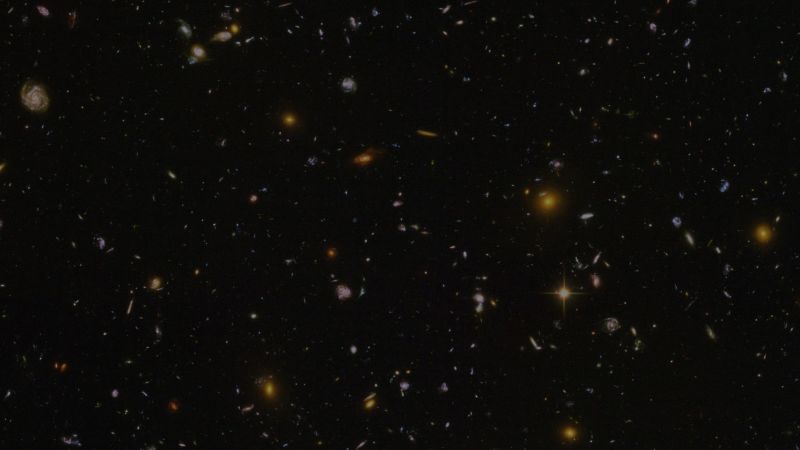Astronomers have spied an intriguing phenomenon in the distant universe — a galaxy that closely resembles the Milky Way — and it’s challenging key theories on how galaxies evolve.
The faraway system, called ceers-2112, was spotted by an international team using the James Webb Space Telescope.
Like our home galaxy, the newly discovered ceers-2112 is a barred spiral galaxy, and it’s now the most distant of its kind ever observed. The bar at the center of the structure is made of stars.
Ceers-2112 formed soon after the big bang created the universe (which is estimated to be 13.8 billion years old), and the galaxy’s distinct structure was already in place 2.1 billion years later.
Given the distance between Earth and the objects from the early days of the universe, when telescopes like Webb observe light from the distant cosmos, it’s effectively like looking into the past.
“Unexpectedly, this discovery reveals that galaxies that resemble our own existed already 11,700 million years ago, when the Universe had just 15% of its life,” said lead study author Luca Costantin in a statement. He is a Spanish National Research Council postdoctoral researcher at Spain’s Centro de Astrobiología in Madrid.
Astronomers were surprised to see such a well-ordered and structured galaxy at a time when others were much more irregular. While massive spiral galaxies are common in the Milky Way’s cosmic neighborhood, that hasn’t always been the case.
The revelation, made possible by Webb’s highly sensitive light-detecting capabilities, is changing scientists’ understanding of galaxy formation and the beginning stages of the universe.
“Finding ceers-2112 shows that galaxies in the early universe could be as ordered as the Milky Way,” said study coauthor Alexander de la Vega, a postdoctoral researcher at the University of California, Riverside, in a statement. “This is surprising because galaxies were much more chaotic in the early universe and very few had similar structures to the Milky Way.”
A study detailing the findings was published November 8 in the journal Nature.
Early evolution of barred spiral galaxies
Astronomers thought barred spiral galaxies such as the Milky Way didn’t appear until the universe reached at least half of its current age because it was believed that it took several billion years of galactic evolution before the massive collections of stars within galaxies could form central bars.
The bars take shape when stars within spiral galaxies rotate in an orderly fashion, as they do in the Milky Way. Until now, astronomers didn’t believe early galaxies had enough stability for bars to form or last.
But the discovery of ceers-2112 has suggested that this evolution only took about 1 billion years or less, de la Vega said.
“Nearly all bars are found in spiral galaxies,” de la Vega said. “The bar in ceers-2112 suggests that galaxies matured and became ordered much faster than we previously thought, which means some aspects of our theories of galaxy formation and evolution need revision.”
Investigation of dark matter
De la Vega believes that astronomers will need to alter their theoretical models for how galaxies form and evolve by accounting for the amount of dark matter included in the earliest galaxies.
While dark matter has never actually been detected, it is believed to make up 85% of the total matter in the universe — and it’s something the European Space Agency’s Euclid telescope has been designed to map. Dark matter may have played a role in the formation of the bars.
The discovery also suggests that bars can be detected in early galaxies, despite the fact that the oldest galaxies are much smaller.
“The discovery of ceers-2112 paves the way for more bars to be discovered in the young universe,” de la Vega said. “Initially, I thought detecting and estimating properties of bars in galaxies like ceers-2112 would be fraught with measurement uncertainties. But the power of the James Webb Space Telescope and the expertise of our research team helped us place strong constraints on the size and shape of the bar.”







































